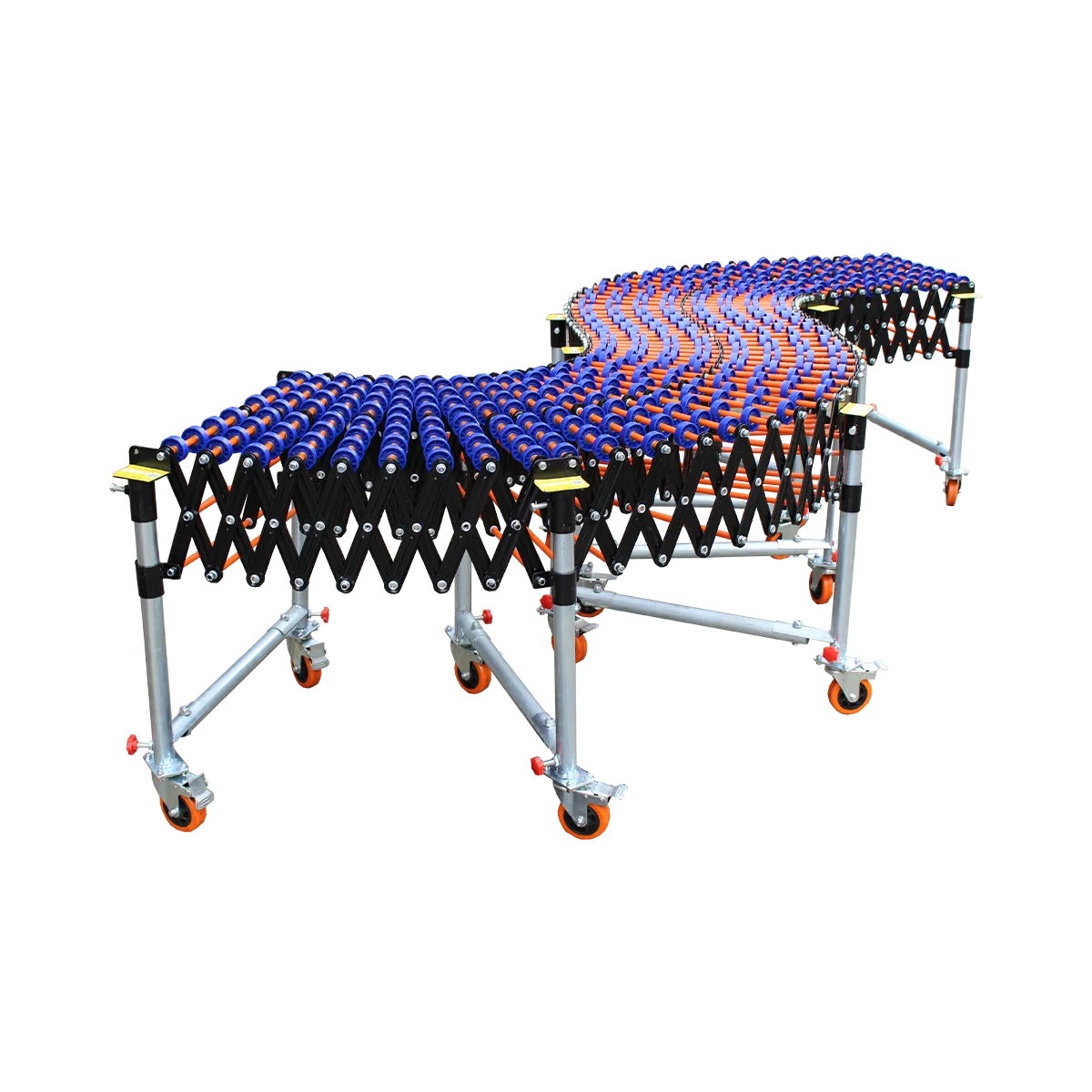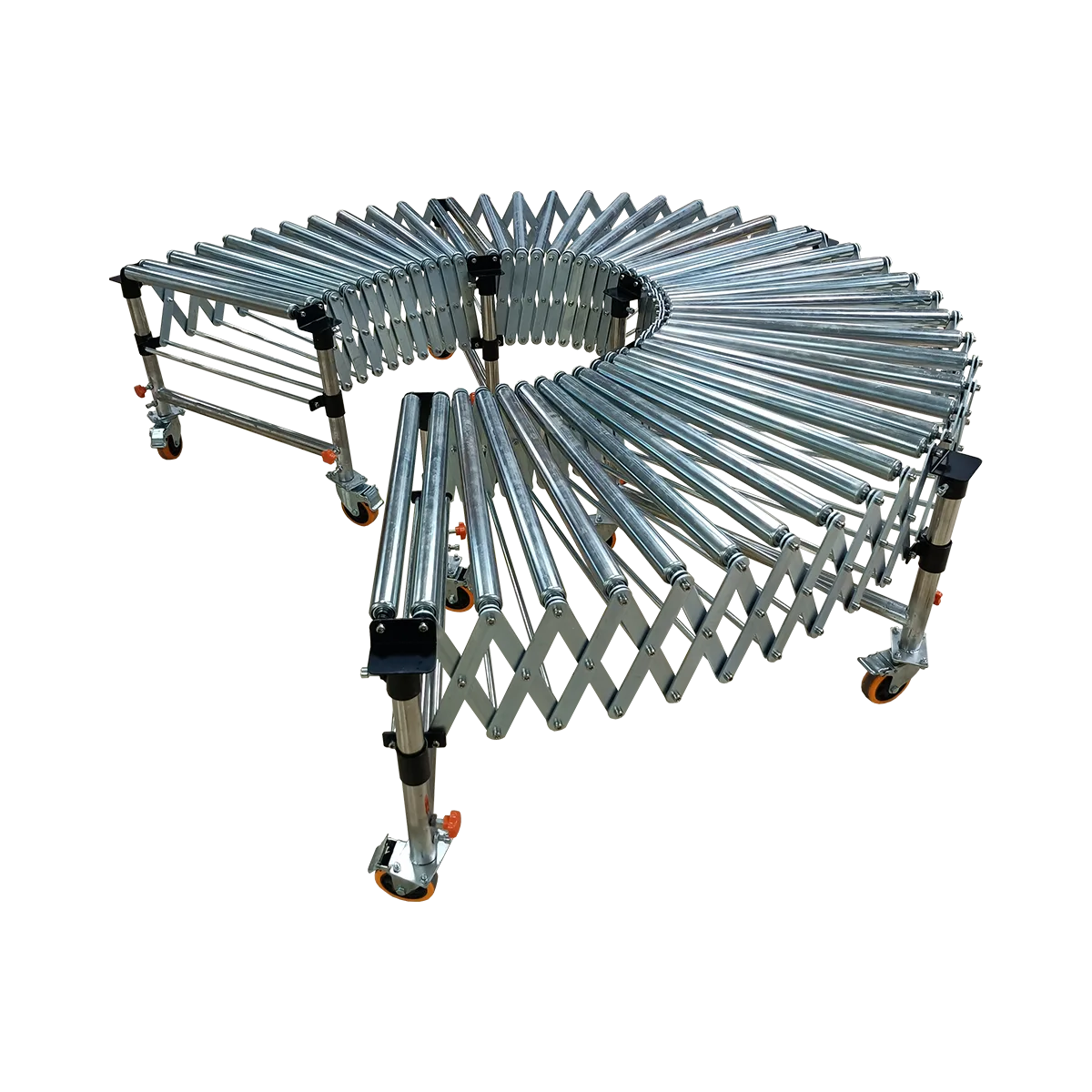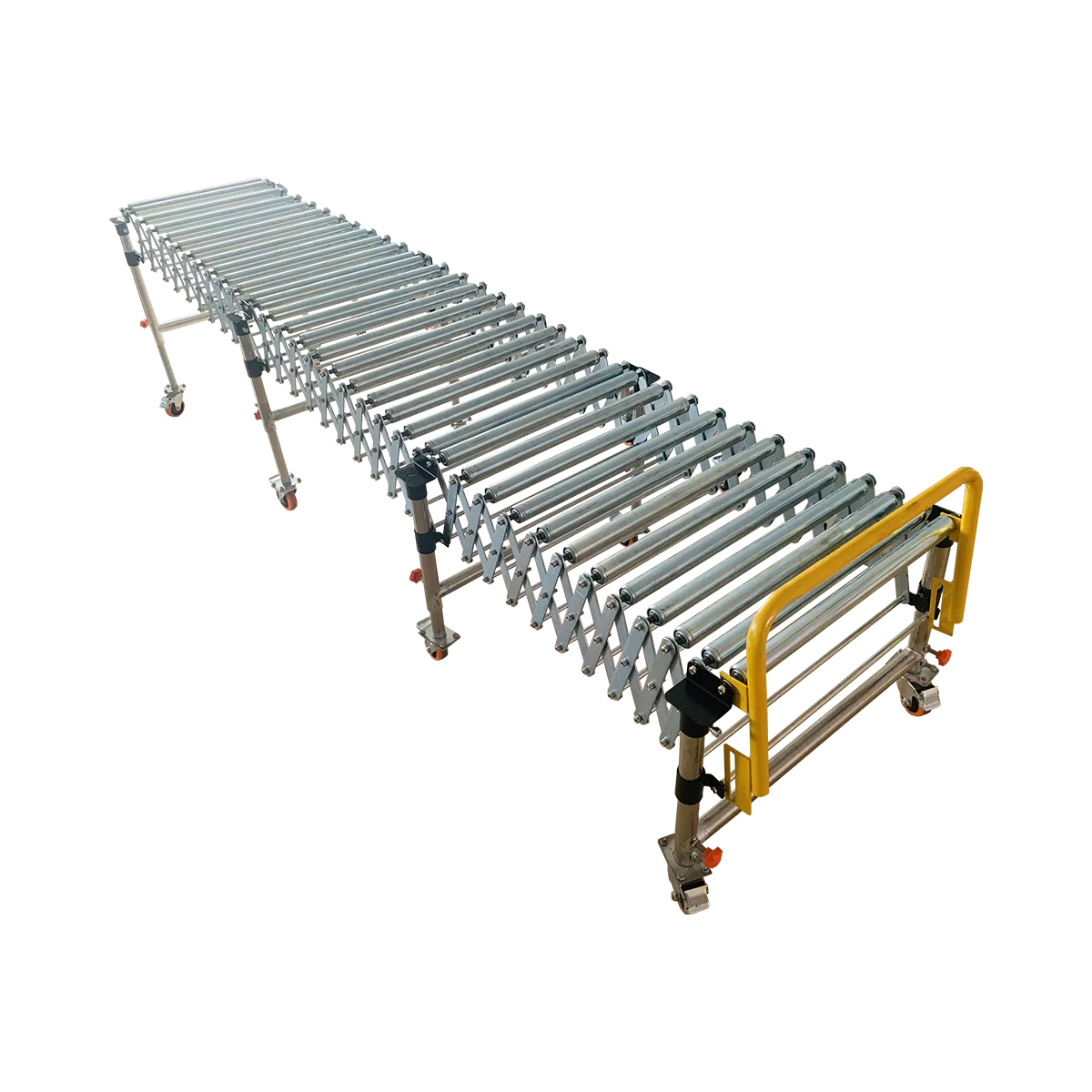Can You Use a Gravity Conveyor on a Flat Floor? The Answer is Yes.
Discover how horizontal gravity conveyor systems enable efficient, low-effort material handling without slopes. Learn why manual roller conveyors are cost-effective solutions for flat warehouse transfers.
Related Products
-
Gravity Skate Wheel Conveyor – 2100 mm/SectionCollapsed Length
420 mm
Extended Length2100 mm
Load Capacity50 kg/m
Applicable GoodsFlat-bottomed Goods
-
Gravity Roller Conveyor – Roller Diameter 50 mm – 1500 mm/SectionCollapsed Length
525 mm
Extended Length1500 mm
Load Capacity50 kg/m
Applicable GoodsFlat-bottomed Goods
Bagged Goods
-
Gravity Roller Conveyor – Roller Diameter 38 mm – 1700 mm/SectionCollapsed Length
485 mm
Extended Length1700 mm
Load Capacity50 kg/m
Applicable GoodsFlat-bottomed Goods
Bagged Goods
When warehouse managers hear “gravity conveyor,” they typically envision sloped systems where packages glide effortlessly downhill. The name itself suggests dependency on gravity’s pull and an inclined setup. However, one of the most overlooked capabilities of these versatile systems is their effectiveness on completely flat surfaces. While the term horizontal gravity conveyor might seem contradictory, these systems can indeed function remarkably well without any slope at all, serving as efficient manual roller conveyors that dramatically reduce the effort needed to move goods across warehouse floors.
This article explores how gravity conveyors perform on flat surfaces, the physics that makes this possible, and the practical applications that make horizontal gravity conveyor systems a smart investment for many warehouse operations. Despite their name, these systems offer significant advantages even when gravity isn’t doing the heavy lifting.
The ‘Effortless Push’ Principle: How roller bearings dramatically reduce friction
The secret behind a gravity conveyor’s effectiveness on flat surfaces lies in its fundamental design: precision roller bearings that minimize friction to near-zero levels. This engineering marvel transforms what would normally be a strenuous pushing task into a remarkably effortless operation.
The Physics of Low Friction
When you place a box on a standard warehouse floor, moving it requires overcoming significant friction between the box’s bottom surface and the floor. This friction force is proportional to the weight of the box – heavier items require more force to move. However, when that same box sits on a roller conveyor, the dynamics change dramatically:
- Point of Contact Transformation: Instead of the box’s entire bottom surface dragging against the floor, it now rests on multiple rollers that rotate freely.
- Bearing Mechanics: Each roller contains precision bearings that convert sliding friction into rolling friction, which is inherently much lower.
- Distributed Weight: The box’s weight gets distributed across multiple rollers, further reducing the resistance at any single point.
- Momentum Conservation: Once moving, the box tends to stay in motion with minimal additional force required to maintain its speed.
The result is that moving a 30kg box on a flat manual roller conveyor requires only about 3-5% of the force needed to push that same box across a standard floor. This dramatic reduction in required effort is what makes horizontal gravity conveyors practical despite not utilizing an actual slope.
When to Use a Horizontal Gravity Line
Horizontal gravity conveyors excel in specific warehouse scenarios where powered systems would be overkill but manual handling alone would be inefficient. Here are the prime applications where these systems deliver exceptional value:
Short-distance transfers between workstations
In manufacturing and assembly environments, components often need to move between closely positioned workstations. A horizontal gravity conveyor creates an ideal transfer mechanism that:
- Requires no electrical connections or power supply
- Can be easily repositioned as workstation layouts change
- Allows workers to effortlessly slide components to the next station
- Maintains a consistent work height across stations
- Reduces the risk of damage from manual carrying
For distances of 3-15 meters between workstations, the low-effort warehouse transfer capabilities of horizontal gravity conveyors provide an ideal balance of functionality and simplicity.
Manual packing or assembly lines
Assembly lines where items move sequentially through multiple processing steps benefit greatly from horizontal gravity conveyors:
- Workers can focus on their specific tasks rather than walking to retrieve items
- Products can be gently pushed from one station to the next with minimal effort
- The line can operate at variable speeds based on current needs
- No electrical systems means no downtime due to power issues
- The system can be expanded or contracted by adding or removing sections
Many light assembly operations find that pushing goods on rollers between stations dramatically improves efficiency while maintaining the flexibility that automated systems often lack.
Staging areas for order fulfillment
In order fulfillment operations, horizontal gravity conveyors create excellent staging areas where:
- Picked items can accumulate before packing
- Orders can be sequenced and organized visually
- Workers can easily access and move items without bending or lifting
- Space is used efficiently with a compact footprint
- The system can handle variable package sizes and weights
These staging applications leverage the conveyor’s ability to make packages highly mobile without requiring the expense and complexity of powered systems.
Comparing the Effort: Pushing a 30kg box on the floor vs. on a Naili Gravity Roller Conveyor
To truly appreciate the efficiency of a horizontal gravity conveyor, consider the dramatic difference in required effort when moving a standard 30kg carton:
| Surface Type | Force Required | Effort Level | Ergonomic Impact | Sustainability |
|---|---|---|---|---|
| Concrete Floor | 150-180 Newtons | High | Significant strain on back and shoulders | Worker fatigue after multiple movements |
| Smooth Tile Floor | 120-150 Newtons | Medium-High | Moderate strain, especially when starting movement | Sustainable for limited repetitions |
| Naili gravity roller conveyor | 5-8 Newtons | Very Low | Minimal physical strain | Sustainable for hundreds of repetitions |
| Naili gravity skate wheel conveyor | 4-7 Newtons | Extremely Low | Almost no physical strain | Sustainable for all-day operations |
This dramatic reduction in required force—approximately 95-97% less effort—transforms material handling from a physically demanding task into a light, manageable activity. Workers using horizontal gravity conveyors can move significantly more material with substantially less fatigue and reduced risk of repetitive strain injuries.
The practical implication is clear: a single worker using a horizontal gravity conveyor can often handle the same volume of material movement that would require 2-3 workers manually carrying or pushing items across a warehouse floor.
The Cost-Benefit: Achieving easy product movement for a fraction of the cost of a powered system
One of the most compelling advantages of horizontal gravity conveyors is their exceptional value proposition compared to powered alternatives. Consider these financial and operational benefits:
Initial Investment Comparison
- Powered Conveyor System: Typically $300-600 per linear meter plus electrical installation costs
- Horizontal Gravity Conveyor: Typically $150-250 per linear meter with no additional installation requirements
The initial cost difference alone can represent savings of 60-75% for comparable conveying distances.
Operational Expenses
- Powered System: Ongoing electricity costs, motor maintenance, control system upkeep
- Horizontal Gravity System: Zero energy consumption, minimal maintenance limited to occasional bearing lubrication
Over a 5-year period, the operational cost difference can easily exceed the initial purchase price of the entire system.
Installation Flexibility
- Powered System: Requires electrical connections, often needs specialized installation
- Horizontal Gravity System: Simple mechanical assembly, can be installed by warehouse staff
This flexibility allows horizontal gravity systems to be deployed rapidly and relocated as needed without specialized contractors.
Reliability Factors
- Powered System: Multiple potential failure points (motors, controls, power supply)
- Horizontal Gravity System: Few moving parts, extremely reliable mechanical operation
The simplicity of non-powered conveyor lines translates directly into higher uptime and fewer operational disruptions.
For many applications, horizontal gravity conveyors deliver 80-90% of the functionality of powered systems at 25-40% of the total cost of ownership. This exceptional value makes them particularly attractive for small to medium enterprises and operations with variable or seasonal material handling needs.
Practical Tips for Maximizing Horizontal Gravity Conveyor Performance
To get the most from a horizontal gravity conveyor system used on flat surfaces:
- Ensure proper height: Set the conveyor at a comfortable working height (typically 750-900mm) to minimize bending and reaching.
- Maintain rollers: Periodically check and clean rollers to ensure they spin freely without resistance.
- Consider package bottoms: Packages with flat, rigid bottoms will move most efficiently across the rollers.
- Optimize spacing: For manual push operations, position workstations at comfortable intervals that don’t require workers to overextend.
- Use strategic placement: Position conveyors to create the most direct path between frequent pick-up and drop-off points.
- Incorporate turns carefully: When designing systems with turns, use specialized corner sections that maintain momentum through directional changes.
- Consider hybrid systems: For longer distances, combine flat sections with slight inclines where appropriate to reduce the total pushing effort required.
By implementing these practical tips, warehouse operations can maximize the efficiency of their horizontal gravity conveyor systems and achieve the perfect balance between manual effort and mechanical advantage.
Conclusion: Think of it as a ‘manual powered’ conveyor – all the ease, none of the electricity
The horizontal gravity conveyor represents a perfect middle ground in the material handling spectrum—more efficient than pure manual handling but simpler and more economical than powered systems. Rather than viewing these as “gravity” conveyors used without gravity, it’s more accurate to think of them as “manually powered” systems where human effort is amplified and optimized through clever mechanical design.
For warehouse managers seeking to improve efficiency without the complexity and expense of fully automated solutions, the horizontal gravity conveyor offers compelling advantages. By dramatically reducing the effort required for pushing goods on rollers, these systems enable more efficient material flow with minimal investment. They combine the simplicity and reliability of non-powered equipment with the efficiency improvements typically associated with more complex systems.
In the end, the answer to “Can you use a gravity conveyor on a flat floor?” isn’t just “yes”—it’s “yes, and you probably should.” For many warehouse operations, these versatile systems represent the optimal balance of cost, functionality, and operational simplicity.
Frequently Asked Questions
How much weight can a worker comfortably move on a horizontal gravity conveyor?
A typical worker can comfortably move packages weighing up to 50kg on a horizontal gravity conveyor with minimal effort. This is approximately 5-10 times the weight that could be comfortably pushed directly on a floor surface.
Do horizontal gravity conveyors work for all package types?
Horizontal gravity conveyors work best with packages that have flat, rigid bottoms. Irregular shapes, very soft packages, or items with protruding elements may not move as smoothly and might require specialized roller configurations.
What maintenance is required for horizontal gravity conveyors?
Maintenance is minimal, consisting primarily of periodic cleaning to remove dust and debris from rollers, occasional lubrication of bearings if movement becomes less smooth, and tightening of any loosened fasteners. Most systems can operate for years with only basic attention.
Can horizontal gravity conveyors be integrated with powered systems?
Yes, horizontal gravity conveyors can easily interface with powered conveyor sections, creating hybrid systems that use powered components only where absolutely necessary. This approach optimizes both energy efficiency and system cost.
What is the typical lifespan of a horizontal gravity conveyor system?
With proper maintenance, horizontal gravity conveyor systems typically last 5-10 years or more in regular warehouse use. The simple mechanical design with few moving parts contributes to this exceptional longevity and reliability.
Table of Contents
Recent Posts
Optimize hardware store logistics with the right building supply conveyor systems. Our guide to tool distribution systems enhances retail warehouse automation for efficient operations.
Optimize your medical supply logistics with efficient gravity conveyor systems. Learn how to safely handle healthcare products while improving your hospital supply chain operations.
Discover how a sports equipment conveyor system can streamline your athletic gear logistics. Flexible conveyor solutions for all shapes and sizes of sporting goods.




